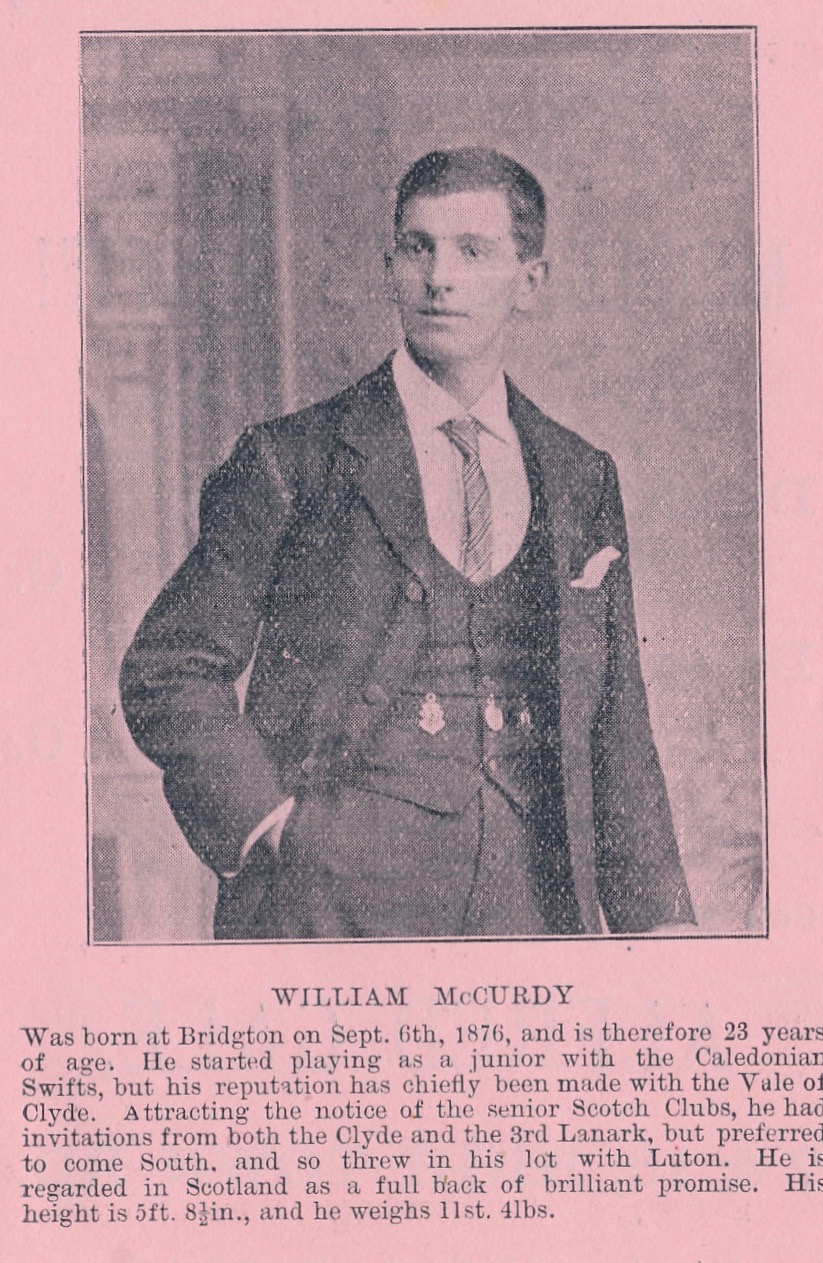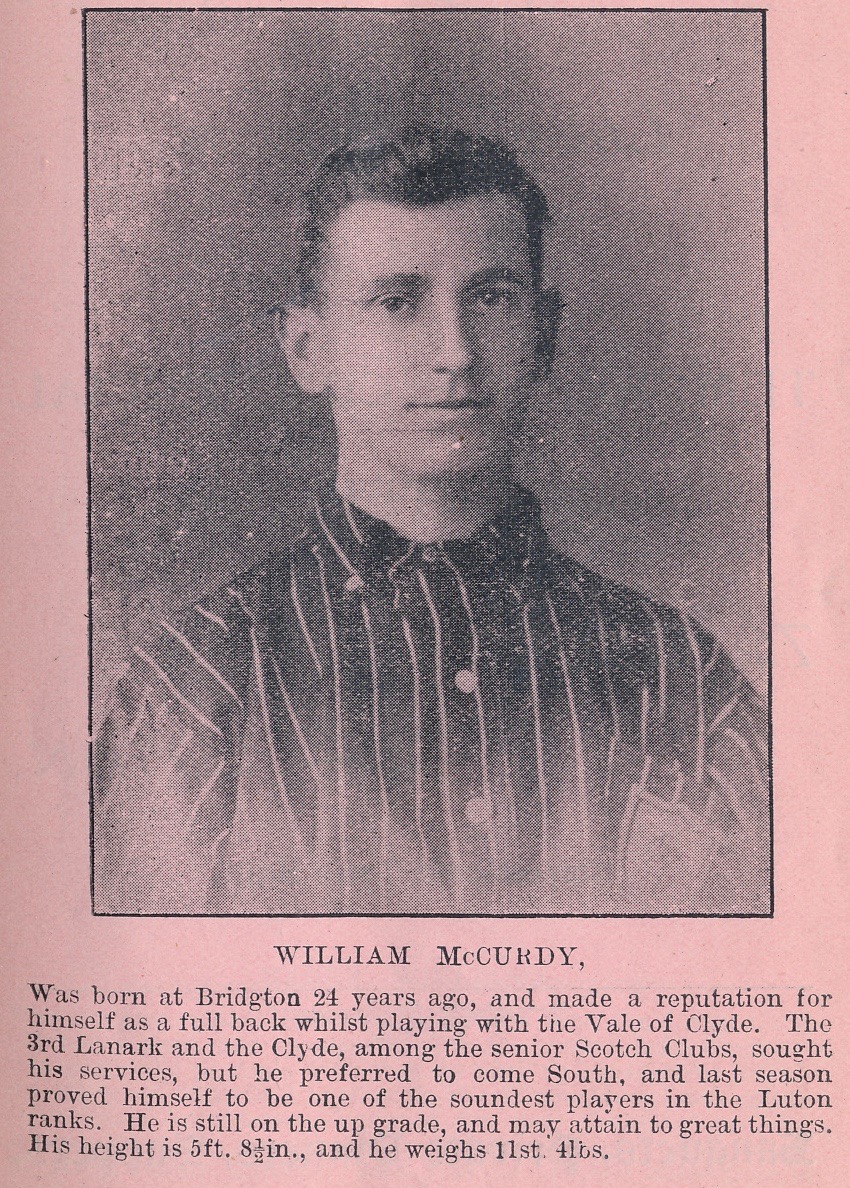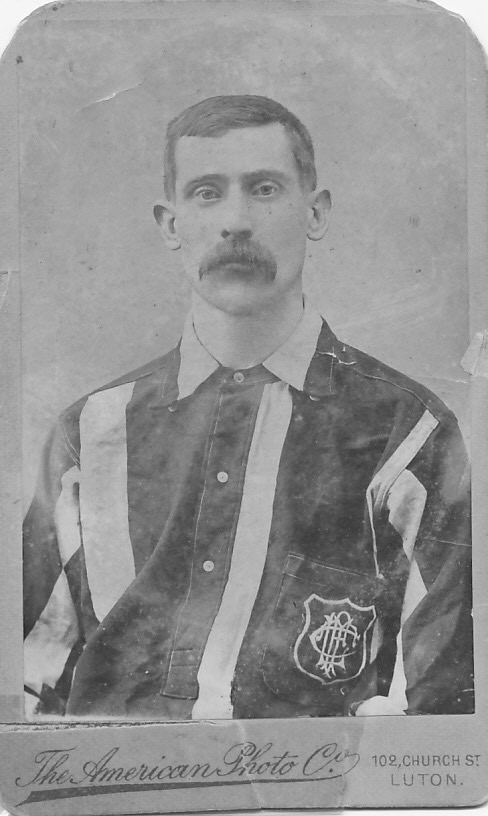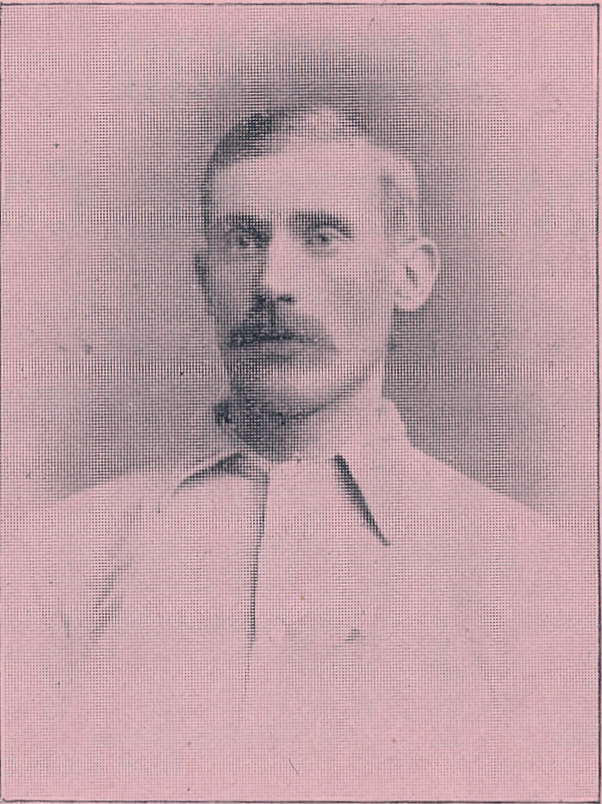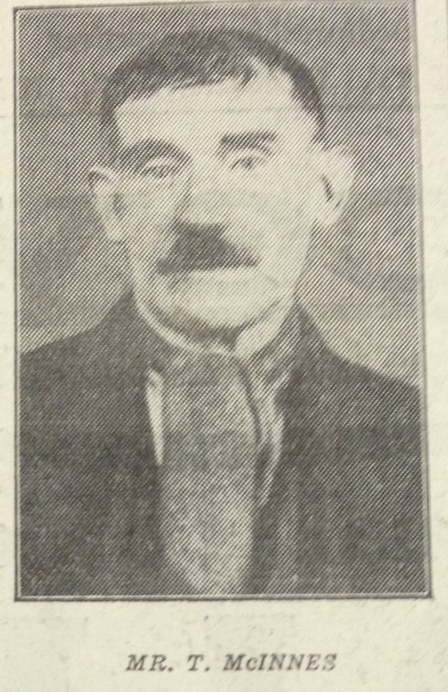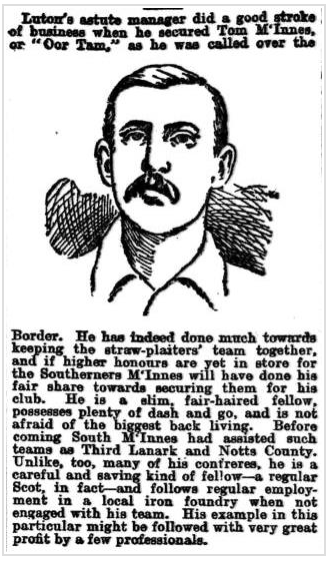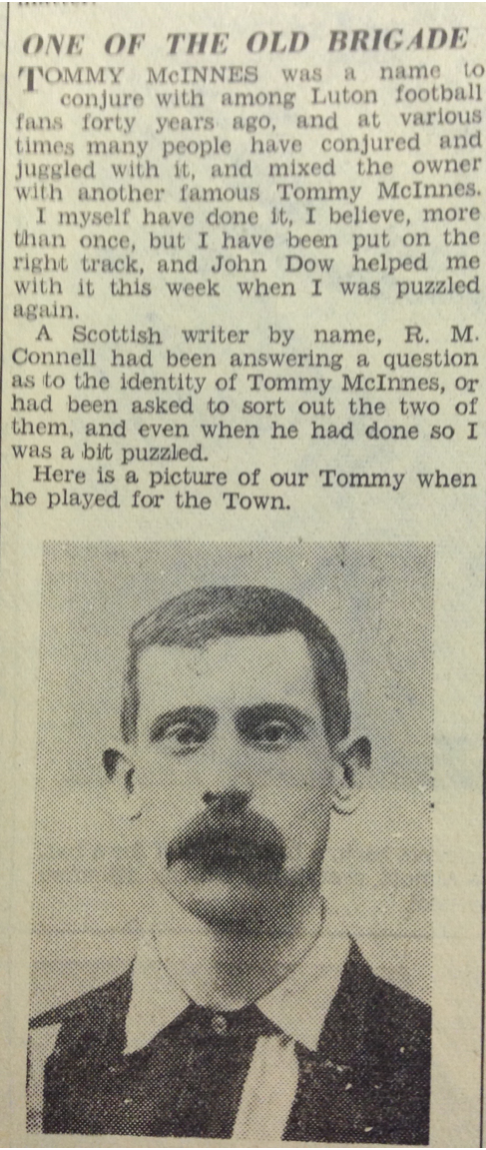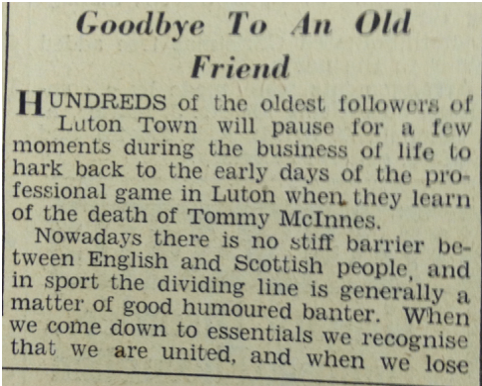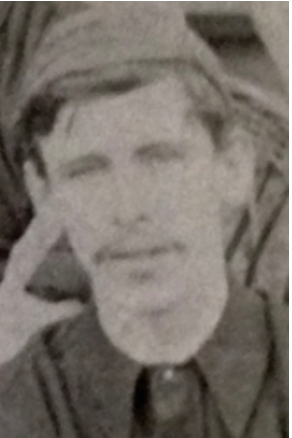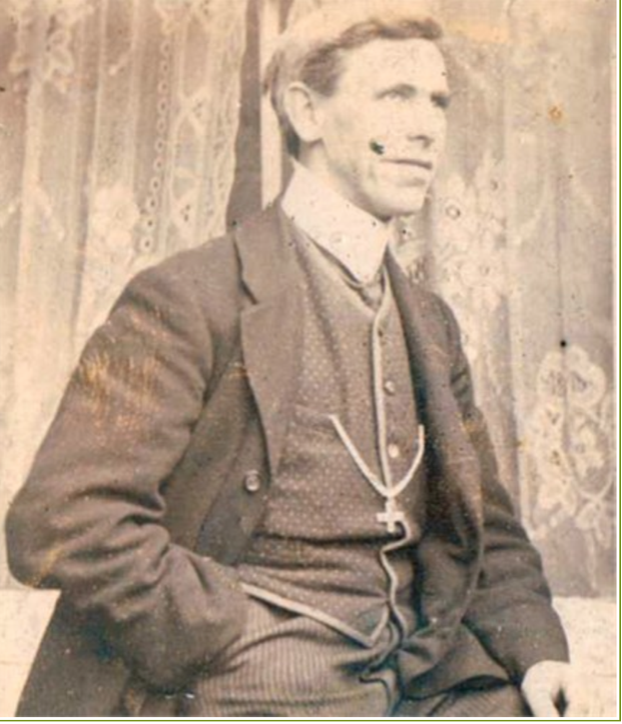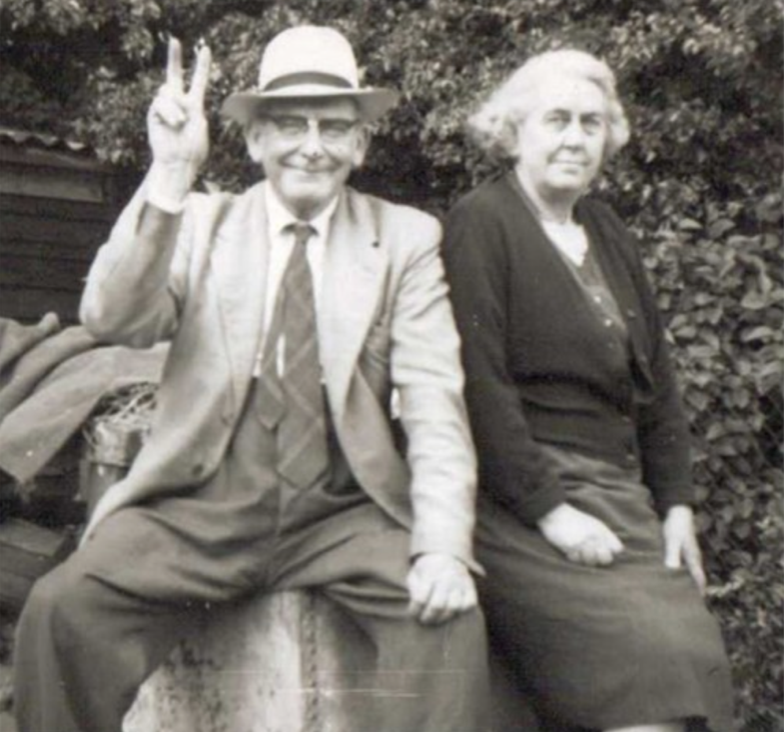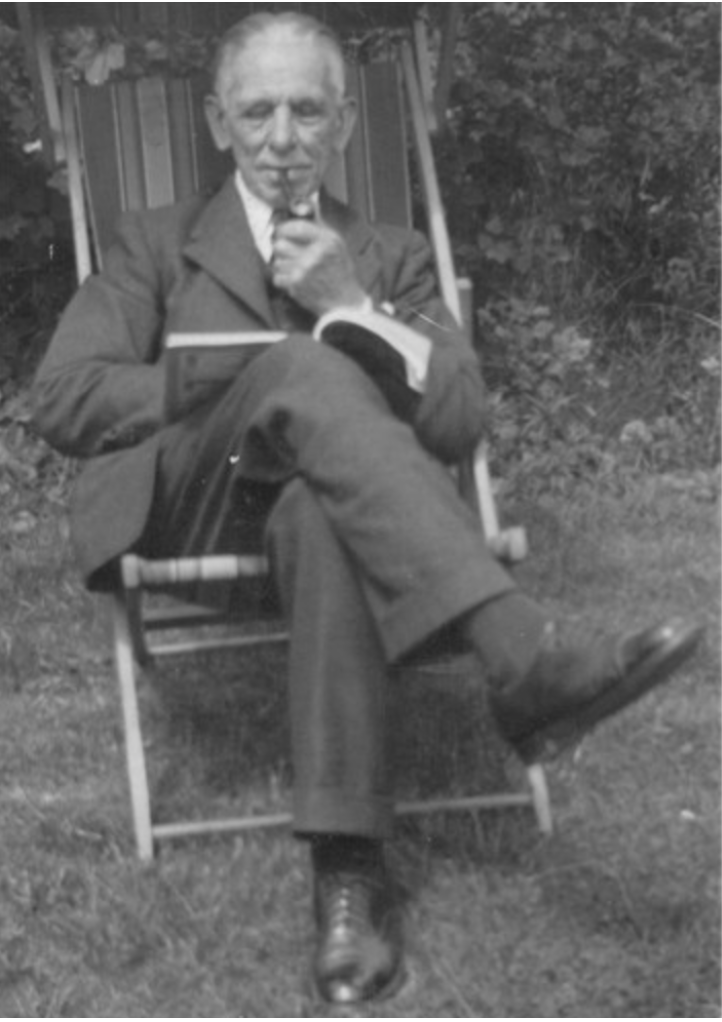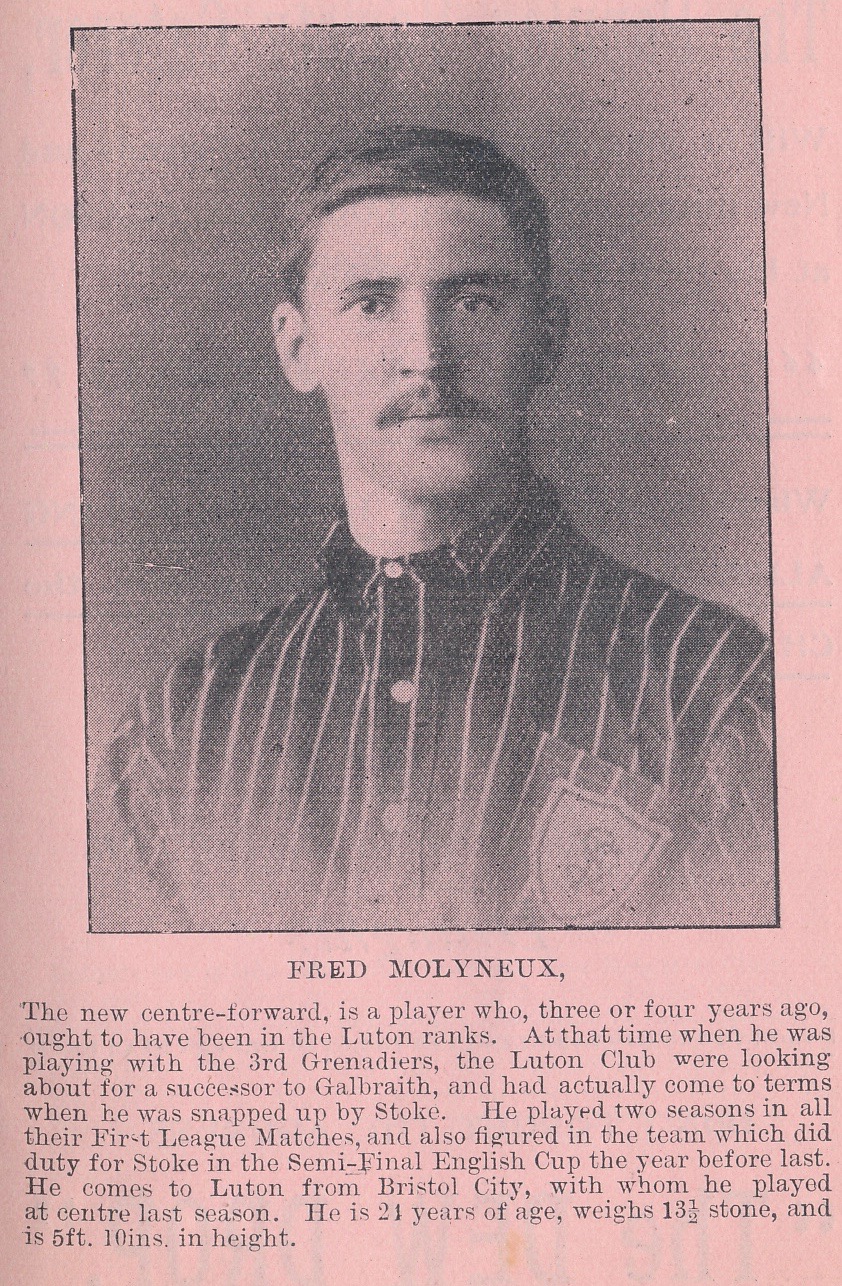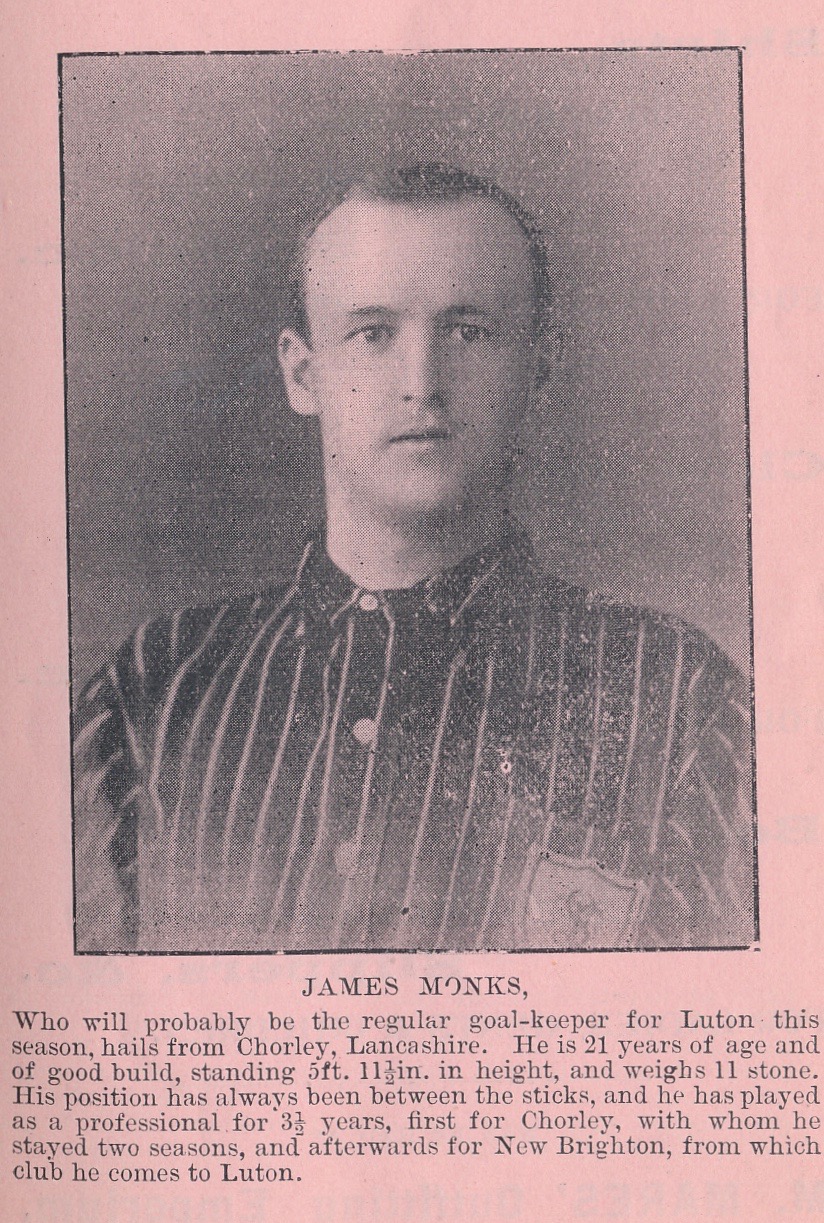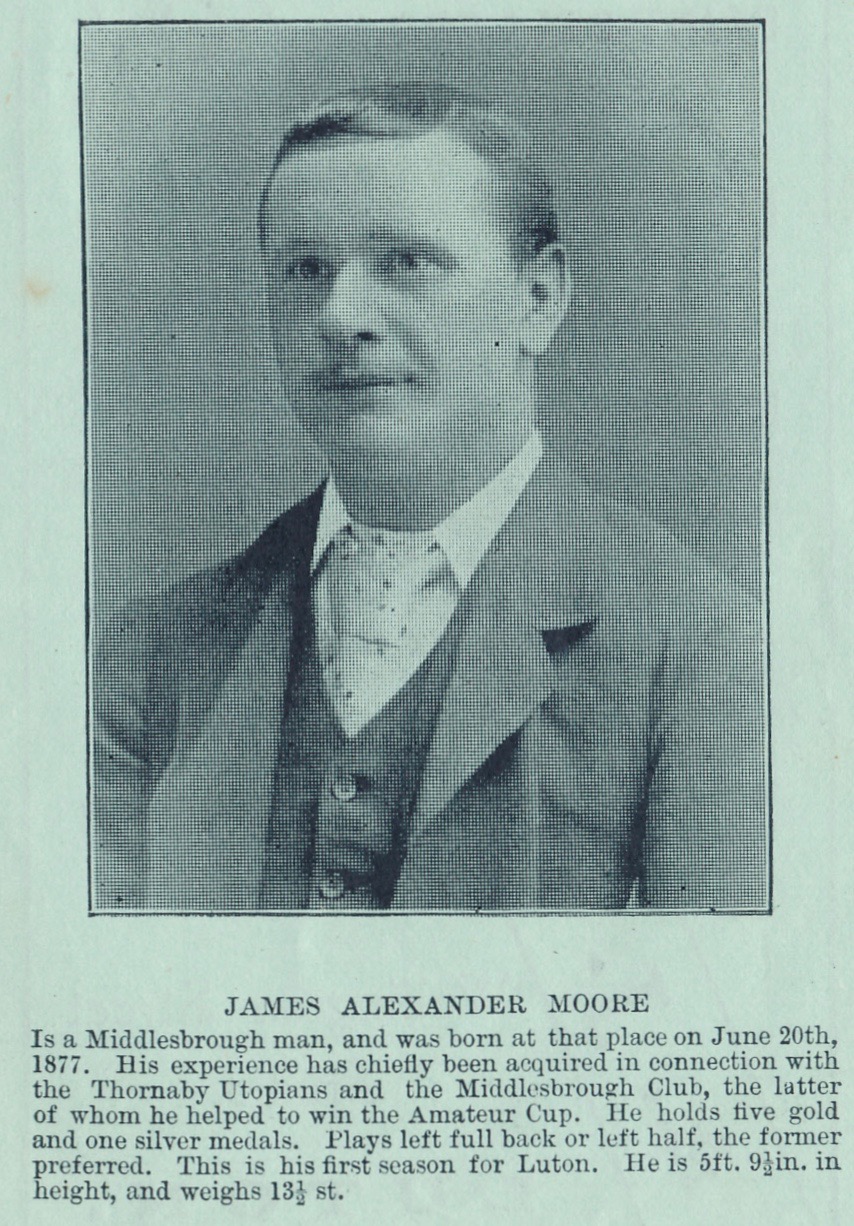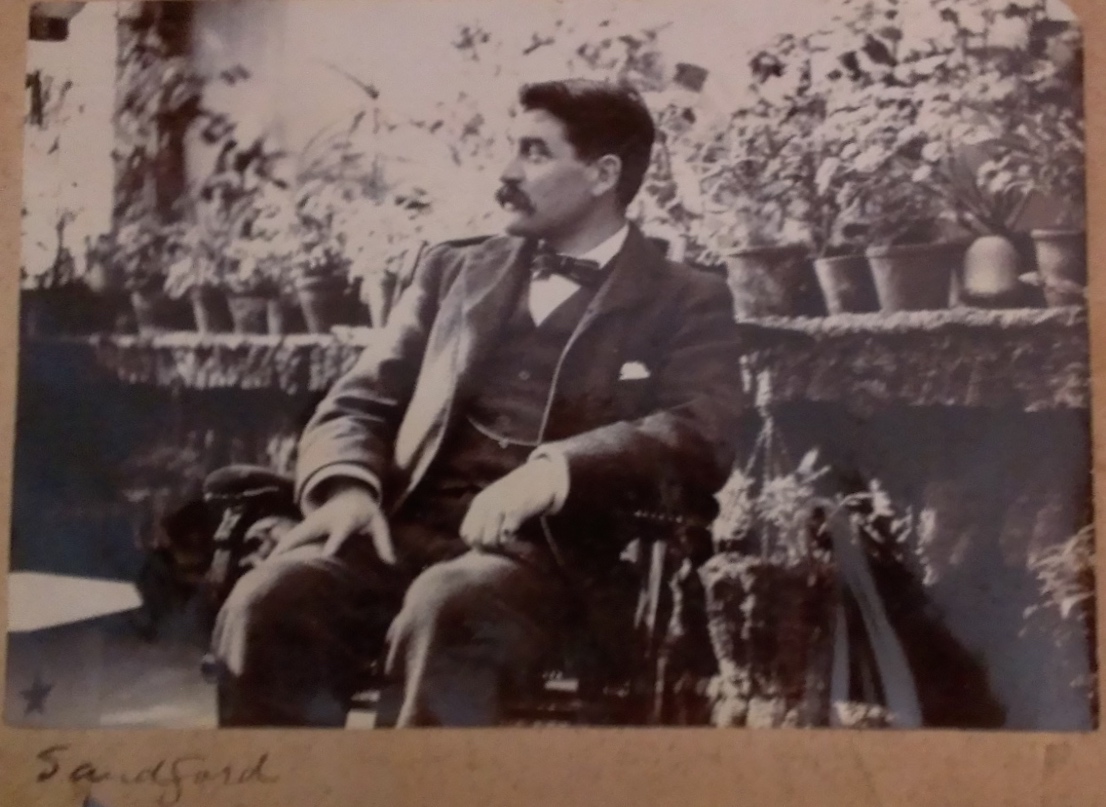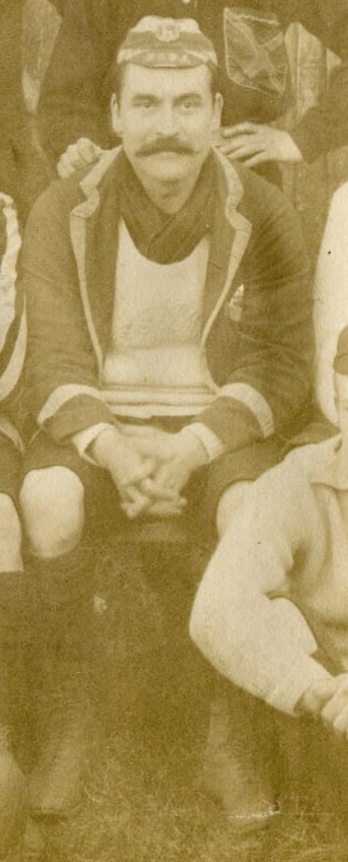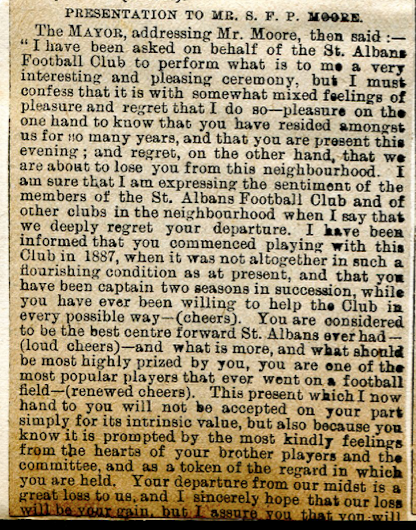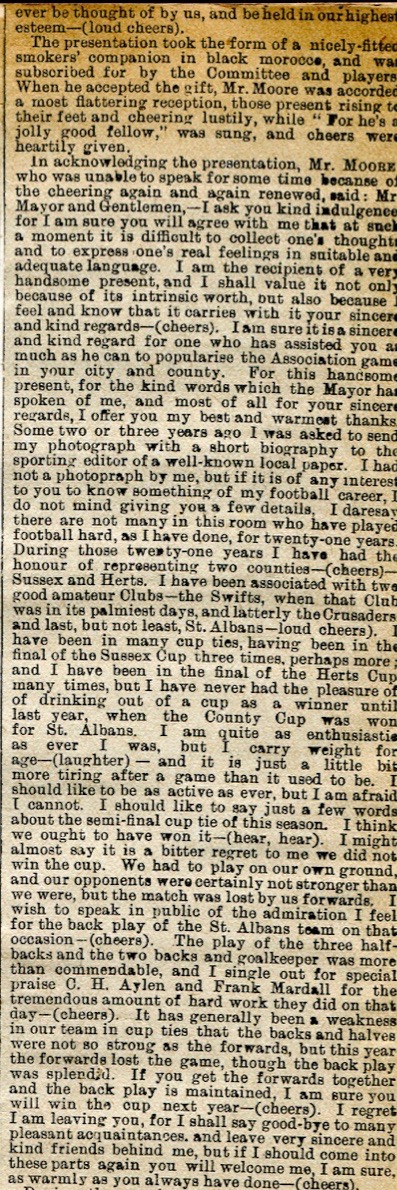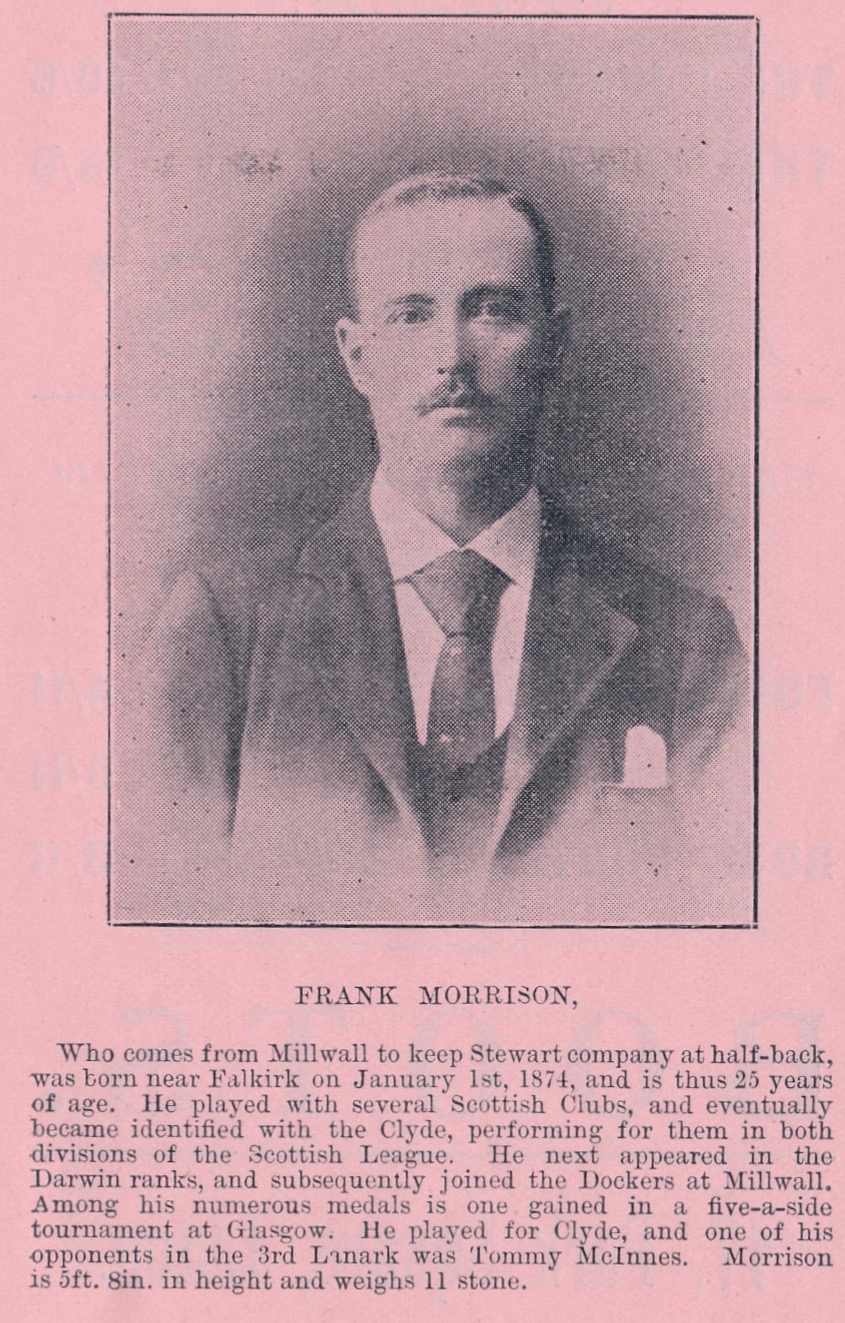William McCurdy
I have two Luton News Luton Town F.C. handbook entries for William.
Bill played 251 times for the Straw Plaiters scoring one goal.
****************************************************************
James “Punch” McEwen

Born Bootle, Merseyside, 16th October 1872. “The Cricket and Football Field” reported in their 12th November 1892 edition that _“What is the Bootle team coming to when they are “coached” by a reserve man, as “Punch” McEwen did on Saturday.”
The former Bootle player came to Luton from Liverpool South End in the Summer of 1894. The Luton Town committee, which ran all aspects of the club, pursued Punch relentlessly as the minute book entries reveal. On 24th May 1894 the club committee wrote to McEwen offering £2 per week as follows – “35 shillings per week and 5 shillings each for each extra match. In the event of there not being enough extra matches to produce the above amount the same should be made up at the end of the season.”
The meeting of 31st May resolved “to grant McEwen a bonus of £5 to sign on within a week of our last meeting.”
The meeting of 8th June resolved that “Mr Arnold should wait [visit] upon McEwen should he not reply by Monday and if necessary increase the bonus to £10.”
14th June committee meeting – “Mr Arnold gave report of his visit to Liverpool which was considered very satisfactory and the best thanks of the committee was tendered to Mr Arnold for bringing the matter to so successful an issue.”
The club had their man and the Luton Times of 29th June 1894, below, announced his arrival at Dallow Lane.


Punch, like many other players, met and married a Luton lass, in this case, Lizzie Nash Scott of Luton in late 1896. The CDV above shows them together. They made friends in Luton and below is Punch with fellow Straw Plaiters, William Gallagher seated, and John Finlayson standing. I believe this is photo was taken on the day of Finny’s wedding in 1896.
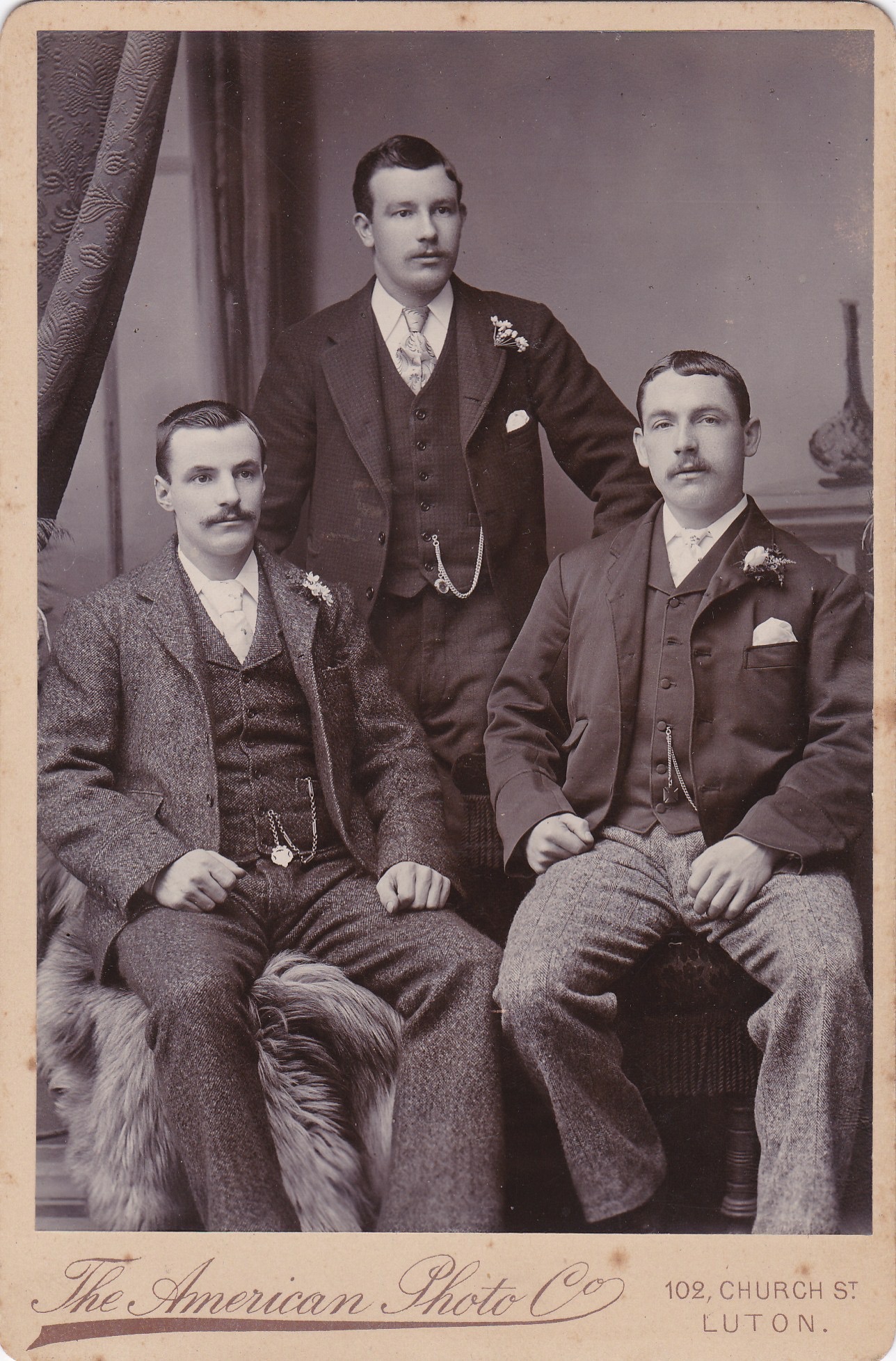

The Sketch of the 18th November 1896 carried the photo left and said that McEwen is;
“the best professional full-back in the South of England. More than that, he has some inferiors and few superiors in the North and Midlands. Although only a little man – he stands 5 ft. 6 in. – he is wonderfully powerful, and, for a dashing back, is unusually safe. McEwen has been with the club a number of years.”

After playing 76 League and Cup games and 2 goals Punch moved on, to Glossop North End. The Luton News clips below from 30th December 1898 explains the reasons.




Glossop North End – Punch, wearing his “playing face,” is back row, extreme right. You can also see William Gallagher (front row second left) and Richard Williams, goalkeeper in cap.
He joined the F.A. Cup holders Bury. In 1901 Punch lived at 14 Brierley Street Bury with Lizzie and a son James William who was 3 and born in Luton on 9th July 1897 Punch’s occupation is described as “Professional footballer and general dock labourer.”
It was an inspired move as he was to help Bury to a second F.A. Cup win in 1903 over the hot favourites, Derby County. Punch was considered the man of match by many reporters. The following three clips are from the Athletic News (note only two players on the pitch are 6ft or above tall);




The drawing on the left is from the Sunderland Daily Echo.
His performance would live long in the memory of those at the game. Leslie Knighton, the Arsenal manager was interviewed by The Globe for their 6th March 1920 edition and recalled McEwen under the title of “Finals of the Past” –
“I think the most extraordinary of the lots was the Derby County debacle, when Bury buried them 6 goals to 0. ‘Punch’ McEwen, now my assistant here, played the outstanding game of the day at right-back.”
Of course, the Bury players were in great demand for photos after the astonishing 6 0 victory. Punch is in all three below.



Glory aside, Lizzie missed Luton so they came back to Strawopolis. The Athletic News of the 11th May 1903 below explains all.

He stayed at Luton much to the surprise of the press, the Lancashire Evening Post of the 10th September 1904 reported that-
“Punch” McEwen has preferred to remain at Luton. This fine little full back was lost to Bury last season but it was understood that arrangements were being made for his return. However, he is again playing with the Strawplaiters, and is in fact acting as captain.”
The Luton Times, below of 13th January 1905 discusses his lack of international recognition. ,

The Athletic News of the 3rd April 1905, below, gives us an excellent inside into the man.

The Luton News of the 25th December 1905 reveals that Punch had a greengrocers shop in Castle Street, Luton. His pony bolted, hurtled off throwing the driver from the trap and colliding with a barrow. Luckily a P.C. Janes, who had much experience of this event, stopped the runaway horse before any further damage was done.
After 69 games for the Plaitopolis club in his second spell, Punch moved on, this time to Norwich City. The Lancashire Evening Post of the 3rd February 1906 kept tabs on Punch –
“A former Bury defender, who will have presumably revisited Lancashire to-day, is James McEwen, or ‘Punch,’ as he used to be called. It is said that he is playing with just the same sound judgment as he used to do, and that Norwich have in him a real treasure. Factors in his success with the Shakers were his quickness in grasping a situation and making up his mind on the course to be pursued, his accurate judgment in timing his efforts to secure possession and his clean kicking.”

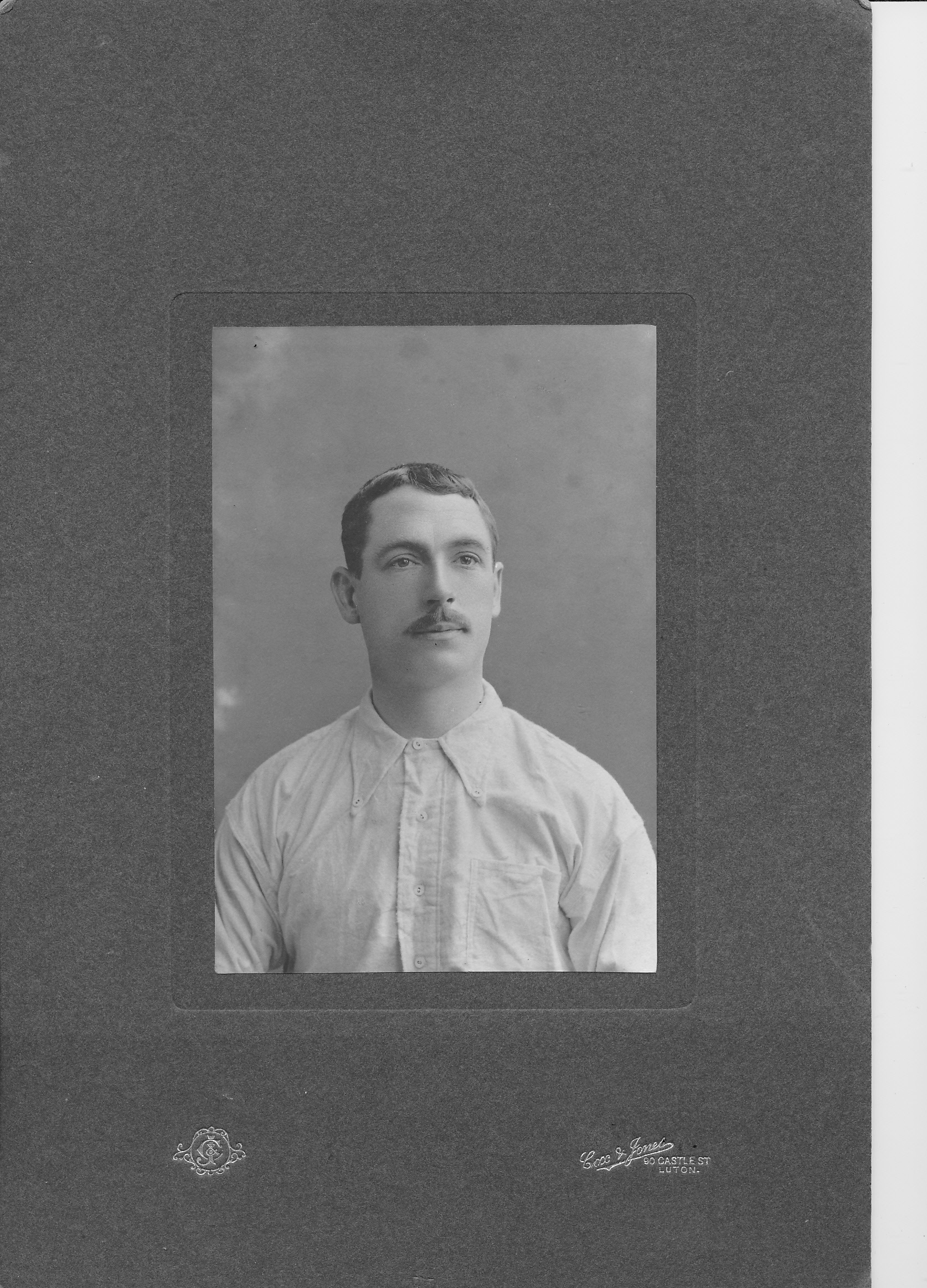
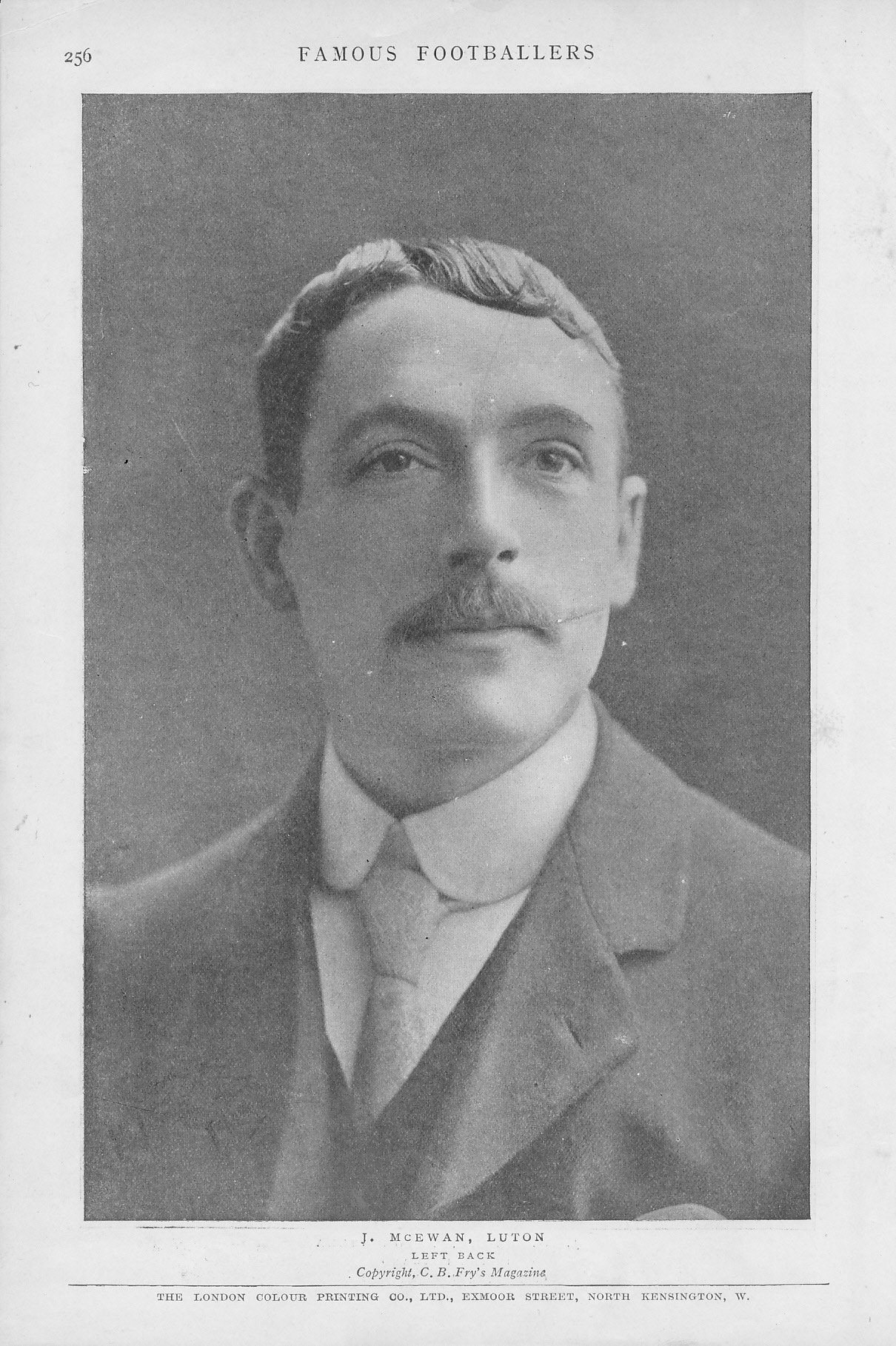
Played and managed Norwich City in the 1907/08 season. His playing ability at last led to recognition of sorts. The Yorkshire Post of 28th January 1908 reported on a North v South International trial match
“At full back ‘Punch’ McEwen, though coming into this class of football late in his career, was as good as any of the quartette….”
He did not make the England team but Punch was one of the best full back never to represent his country.
He moved on yet again as the Shrewsbury Chronicle of the 27th November 1908 mentioned that the Norwich defence was weak now that they had lost Punch. The papers adds that “he will ever kick a ball for the East Anglian side again.”
The Lowestoft Journal of the 10th September 1910 reveals that Punch was in charge of Fulham Reserves when they played Norwich Reserves at “The Nest” –
“Punch” McEwen, an old Norwich favourite, was in charge of the visiting eleven.”
The Star Green ‘Un of the 30th August 1913 reveals that –
“During the close season, Mr ‘Punch’ McEwen refused the managership of the Glossop club, and since then has had under consideration a splendid coaching offer from one of the first class London clubs.”
Punch appears to have changed his mind as the Yorkshire Evening Post of the 28th February 1914 says –
“Mr James McEwen, popularly known as ‘Punch’ McEwen, has resigned his position as secretary-manager to the Glossop club. The decision has aroused considerable surprise in Association circles.”
Punch was the wartime Arsenal manager from April 1915 until April 1919.
He stayed with Arsenal in various capacities it appears. The Bury Free Press of the 25th February 1933 reveals his work as a scout –
“Another instance of the keenness with which Football League clubs are searching the country on the chance of spotting talent is shown by the fact that the Arsenal were represented by “”Punch” McEwen, formerly of Norwich City at the East Anglian Cup tie last Thursday between the C.E.Y.M.S. and Gorleston. He had come down especially from Highbury to see the match, but he must have been disappointed for the form was very moderate.”
 The Sunday Mirror of the 23rd July 1939 reveals another side to Punch’s talents. A film, “The Arsenal Stadium Mystery,” not only featured some of the clubs players but also Punch – photo left.
The Sunday Mirror of the 23rd July 1939 reveals another side to Punch’s talents. A film, “The Arsenal Stadium Mystery,” not only featured some of the clubs players but also Punch – photo left.
“Eddie Hapgood and Leslie Jones were particularly natural actors and so was Tom Whitaker, but the real ‘discovery’ of the picture was sixty-six-year old Punch McEwen, the Arsenal’s assistant trainer, who was left back for Bury when they rattled up that 6-0 win over Derby in the 1902-03 Cup Final.
Punch was so good that they wanted to feature him as a comedian, but his wife wanted to go on their holiday to Southend, so – they went to Southend.”
A still of Punch in the film is on the left but if you want to see him in the film then click here https://www.youtube.com/watch?v=QmX4BJGcEp8 and go to 7.40.
The Luton News of the 17th August 1939 was compiling an all time best team and discussed left back –
“I give it to ‘Punch’ for his lightening tackling and speed. He was about the quickest at lifting his foot off the ground who ever played in the game.”
The Luton News of the 14th September 1939 bumped into Punch while he was visiting Luton.

James “Punch” McEwen died on the 27th May 1942 while living at St. Annes Road, Barnes, London. He left £740 14s 5d to Lizzie in his will. Lizzie died in Barnes, Surrey on the 18th December 1957. She left £395 12s 3d to their son, James William McEwen who was then a plumber.
A great footballer, coach, manager, man, film star and, it seems, comedian.
****************************************************************
Tommy McInnes
Tommy played 153 games for the Straw Plaiters scoring 43 goals.
Above are newspaper clippings from 1899 (left) and from 1933 (Luton News)
The Luton News published a profile of Tommy above in 1933.
Tommy died in Hart Lane, Luton on the 17th January 1939.
The football correspondent of the time, “Crusader” paid his tribute, below, in the Luton News of the 19th January 1939.
Tommy’s funeral was reported, below, in the Luton News of the 26th January 1939.
Finally a summary of Tommy’s life.
*********************************************************************
Walter Frederick Miller
Walter Frederick Miller was born on the 9th July 1868 in Luton. He lived with his parents at 18 Princess Street. His father was a Joiner and Carpenter. Walter followed his father and became a Joiner. Although he was only 16 at the beginning of 1885, he was already one of the leading footballers in the town. He made his name with the Albany Football Club alongside Albert Sanders. He also played cricket for Albany. He made his debut for Luton Town Football Club in October 1885 in a reserve game against Wheathampstead. He worked his way into the first team and played in the 1890 Kettering Charity Cup Final against Grantham Rovers. His last game for Luton Town was January 1891 but he continued to play for the newly formed Bury Park F.C and for Luton Montrose F.C. He is pictured left in his red, with no star, Luton Town shirt.
Walter married May, in early 1898 when he was 30 years old. He is pictured above in about 1911 with May and their children, Donald, Reginald, Marjorie and Rita. They were living at 56 Buxton Road at this time. His occupation was a “Pattern Maker Motor Car” according to the census. They moved to Stopsley.
Tragedy struck after their son, Roy, was born in late 1912. Walter’s wife, May, died on the 16th March 1913. Their daughter, Marjorie, died on the 31st March and Roy died on the 5th April.
Walter also played cricket for Luton Town Cricket Club and for Lilley. He was well known for his recitations and singing. For many years he was organist and choirmaster at St. Thomas’s Church, Stopsley and was also organist at Stopsley Baptist Church.
Walter, above, with his second wife Laura, whom he married in 1917. They had six children together.
Walter was employed as a pattern maker at Vauxhall Motors until his retirement aged 75.
Walter died at his home at 33 Lothair Road, Stopsley on 9th April 1956. The funeral was held at St. Thomas’ Church on the 13th April 1956. His favourite hymns “Lead Kindly Light” and “Abide With Me” were sung. Walter is buried in St. Thomas’ churchyard.
A winger of below average height, he was one of the pioneers of football in Luton. It was whilst playing in the Luton Town forward line with men of equal stature, J.C. Lomax and George Deacon, that the team were affectionately termed our “little lot.”
****************************************************************************
Fred Molyneux
Fred only played two first team games scoring twice.
**********************************************************************************
James Monks
James played two first team games for the Straw Plaiters.
****************************************************************************
Herbert Moody

The above is a cigarette card from 1908/09.
Herbert played 266 times for the Straw Plaiters scoring 106 goals.
****************************************************************************
James Alexander William Moore
James played 34 games for Luton Town
**************************************************************************************
Sandford Ffolliott Pierpoint Moore
Sandford Ffolliott Pierpoint Moore was born in Lyme Regis, Dorset in 1860 to William Walling Moore and Emily Francis and he was baptised on 2 February 1860. His father was an organist.
In 1881 the census finds him at St. Saviours Middle Class School, Ardingley, Sussex working as a school master.
Sandford became the Music Master at St. George’s School, Harpenden. The first mention of him in the school magazine is on 14th December 1887 when it is recorded that he played football for Hertfordshire against Huntingdonshire at St. Albans. In early 1888 he made a successful debut in the school theatricals. He also played cricket for the school (football and cricket teams were made up of Masters and Pupils). He took a First Class Certificate in Practical Anatomy at Edinburgh and was elected President of the St. George’s Swimming Club. In the St. George’s School magazine there are profiles of all the footballers. Sandford is described as;
“A first rate dribbler; always on the ball and using his weight well; should pass more to the wings.”
He continued in 1889 to be involved in school entertainment (conductor and performer), cricket and football. His football profile for 1889 shows that he appears to have learnt to pass to the wings and reads;
“ Centre forward; combining pace and good dribbling powers; shoots hard and well.”
The St. George’s kit at this time was;
“pink and white shirt faced with red, S George’s cross on breast; red skull cap with white tassel and S.George’s cross in front.”
Sandford also played football for St. Albans as well as the school and Hertfordshire.
In April 1890 Luton Town F.C. realised that there was a lot of talent on their doorstep in the form of the St. George’s School masters and ask him to play for them. He made his debut in the replay of the Kettering Charity Cup Final against Grantham Rovers. Unfortunately an injury to a key Luton player when the scores were level turned the tide and resulted in a victory for the men from Lincolnshire. Sandford, an all round centre forward, impressed the committee of Luton Town and he played most of the games in the remainder of 1890.
He missed one game on 11th November 1890 when he turned out for his school in a team made up of masters and pupils. The St George’s kit at this time was;
“Cardinal and slate shirt, S. George’s cross on breast; red skull cap with white tassel and S. George’s cross in front.”
Taken from the St. George’s School newsletter;
“S. George’s v Luton Town. A great deal of interest seemed to be taken in this match to judge from the crowd of spectators who lined the ropes to witness the encounter. Luton had a fairly representative team, and though defeated in the end by three goals to nil gave us a very good game, and proved the most stubborn opponents we had so far met this season, indeed at one part of the match it seemed quite probable that they would succeed in spoiling our hitherto unbeaten record. On starting a rush was made into the visitors’ territory, and More made an unsuccessful attempt to shoot a goal. Luton retaliated with some good combined play on the right wing between the two Whitbys, who both showed to great advantage. All our efforts to score were frustrated by the safe play of the Luton backs and the persistency with which they packed their goal when pressed until after half-time, when Mr Moore backed up by Vaughan broke through their defence and scored. Luton tried hard to equalise and missed a fine chance of scoring. A hot attack was not made on the Luton goal, and at length a shot from More [not Sandford] took effect whilst our third goal was obtained from a scrimmage shortly afterwards, Mr Moore sending it through.
S. George’s School 3 goals
Luton Town nil
S. George’s School._ Goal, G.B. Joy; backs, Mr J.H. Gill and W. Elliott; half-backs, Rev. C.W. Bennett, T.H. Vaughan (captain, F.J. Moore; forwards, Mr S.F. Moore (centre), F.W. Walker, J.H. Grey (right), Mr S.M. Stanley, A.H. More (left).
Luton.- Goal, T. Read; backs, H. Chester and A. Martin; half-backs, A. Barford, A. Hoy and J. Wright; forwards, J. Read, J.K. Whitby (right), J. Hoy, A. Whitby (left).”
Sandford scored twice against a reasonably strong Luton Town team. Only ten players are listed but there is no mention in the report that Luton played one man short so we must assume a name was missed off the team sheet.
On the 4th December 1890 Luton Town were due to travel to Wolverton in the first round of the Kettering Charity Cup. The minute book records that the team was selected for Wolverton but none of the Harpenden men were available except Mr Moore who had to be home by 8 o’clock. The committee therefore agreed that;
“Mr Long should hire Mr Cannon’s horse and trap, drive down gently early in the day and bring Mr Moore back at night”.
This is the only time such an arrangement was made by Luton Town so Sandford was a very important and well regarded footballer. The effort was worth it as Sandford was man of the match and made the Luton goal with a magnificent run and pass for Frank Whitby to score.
The club remain friends with him and he came regularly to Luton in 1892 and 1893 to referee games. He continued to be involved in all the school activities already mentioned. In 1894 he left the school and joined the “Old Georgian Club” as a “Past Master” in order to stay in touch. The “Old Georgian” club ran a newsletter and met up regularly.
When Sandford left the area in 1894, a presentation was made to him at the St. Albans F.C. Annual General Meeting. The following clips are the report in the local newspaper.
On the 24th January 1895 he married Angelina Mary Eveline Cornwall Brooks in St. James, Paddington, London. Two children, Edmund Sandford and Joyce Mary Theodora follow. The 1901 census finds him living back in the area living at the Gate House of St. George’s School and his occupation is described as “Professor of Music.” The school shut in 1904 due to money worries. The present school opened in 1907 and kept the name, St. George’s.
It is not clear if they continued the old boys newsletter after the school closed so we lose track of him apart from a few public records. In 1911 Sandford was a teacher in Lambeth. He died in Ealing in March 1948 and left everything, £207 9s 2d, to his daughter.
Thanks to;
Sue Mitchell at St. George’s School, Harpenden for her very generous help.
Donna Langdon and Diane Kelly for the photo of Sandford in his conservatory
David Tavener/St Albans City and St Albans Library for the photo of Sandford in his kit and the AGM clip.
***************************************************************************
Frank Morrison
Frank played 17 times for the club.


